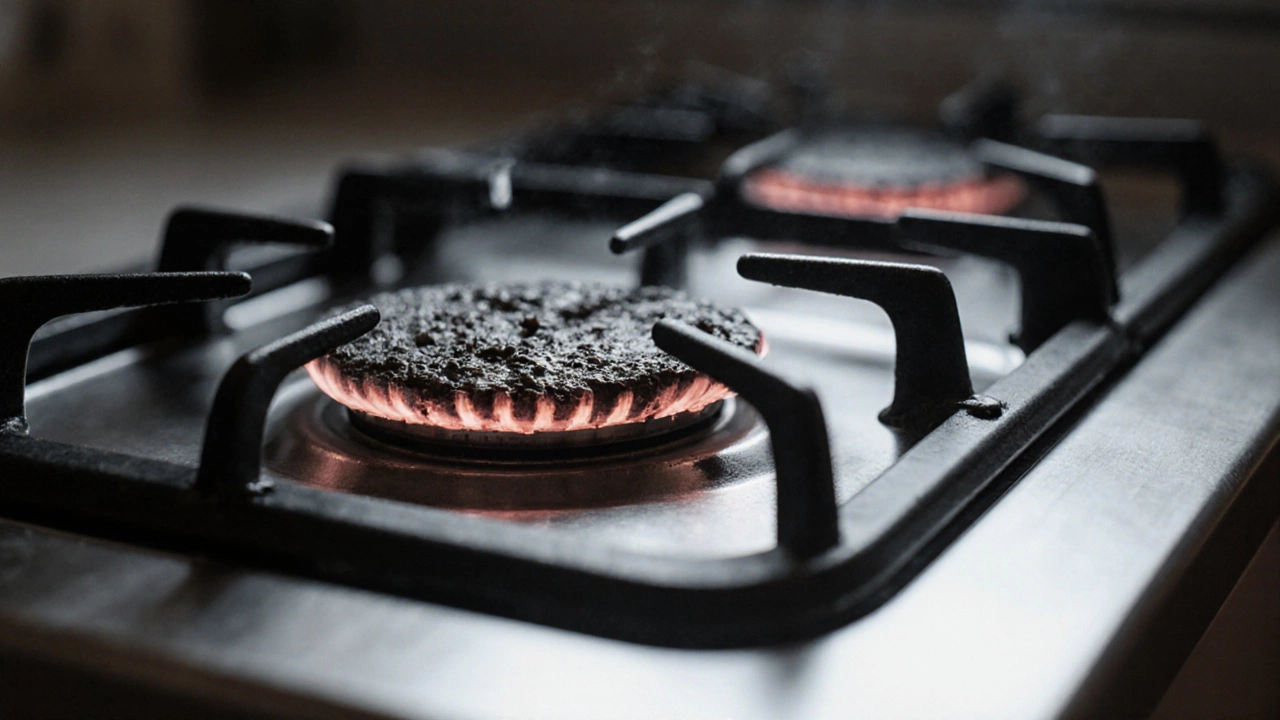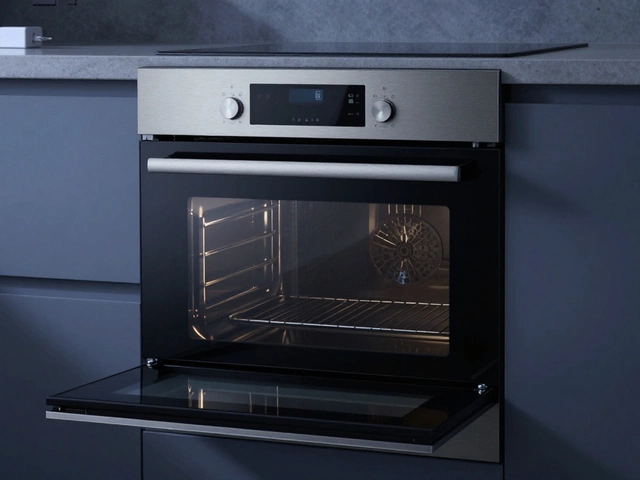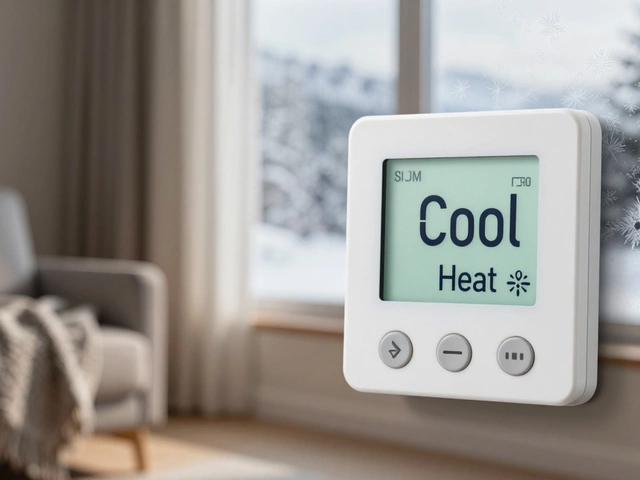So, you’re tired of that oven conking out every holiday? You’re not alone. Ovens seem tough until you’re stuck with half-baked cookies and a blinking error code. Before throwing cash at another repair, it helps to know which brands actually last longer.
The truth? Not all oven brands are created equal when it comes to repairs. Some look fancy in the showroom but rack up service calls like clockwork once the warranty ends. Others—the ones your neighbor never complains about—keep chugging along year after year. The tricky part is sorting real reliability from all the marketing fluff.
Turns out, repair techs see the same names pop up again and again for the same issues: broken heating elements, sketchy electronics, or doors that don’t seal. But they also see a few workhorse brands that just don’t break as often. Want to go a few years without seeing a technician? Stick around. I’ll walk you through which brands have the fewest headaches, plus some no-nonsense ways to keep your oven off the fritz.
- Why Oven Brands Vary in Reliability
- Top Brands With the Least Repairs
- Brands to Avoid—And Why
- Tips to Maximize Your Oven’s Lifespan
- When to Repair vs Replace
Why Oven Brands Vary in Reliability
You’d think ovens are all about the same under the hood, right? Not even close. The reliability question starts way back at the design table and depends on loads of things: company priorities, where parts are made, how strict the quality checks are, and how the brand actually handles feedback from customers when stuff goes wrong.
Some brands focus on fancy features and snazzy looks. That helps boost sales, but often means more electronics to break. Others skip the flashy stuff and double down on proven parts and sturdy build. For example, Whirlpool and GE tend to keep things simple and use time-tested heating elements, while some European brands pack their ovens with electronics that can glitch out more often.
Another reason brands perform differently—cost-cutting. Brands that sell lots of budget ovens might use cheaper parts or outsource assembly. Over time, this means more breakdowns. In contrast, brands like Bosch and Miele have their own factories and pretty strict controls, which keeps failure rates lower.
| Brand | Annual Service Call Rate (%) | Main Issues Reported |
|---|---|---|
| Whirlpool | 7.8 | Heating elements, timers |
| GE | 8.2 | Door hinges, digital controls |
| Bosch | 6.5 | Display panels (rare), fans |
| Frigidaire | 12.3 | Temperature sensors, control boards |
| Samsung | 14.1 | Touchscreen issues, breakers tripping |
If you care about repair costs and downtime, check if the oven brand actually has plenty of local electric oven repair options. Some imported brands make you hunt for rare parts, so a simple fix can take weeks. On the flip side, popular American brands usually have parts at every appliance warehouse and techs who’ve seen every possible issue.
One last thing—how a brand trains its support crew matters. Techs report fewer headaches fixing Whirlpool or GE because their service manuals are straightforward, and the companies back up warranty claims without a fuss. Brands with helpful customer service usually have lower repair rates just from smooth problem-solving alone.
Top Brands With the Least Repairs
Most folks just want an oven that works year after year without calling the repair guy. Based on the latest 2024 reports from appliance repair pros and surveys like those from Consumer Reports, a handful of brands consistently do better than the rest when it comes to avoiding breakdowns.
Right at the top, Whirlpool tends to shine. Their electric ovens are pretty basic, but that’s a good thing—fewer bells and whistles mean less stuff to break. Whirlpool has kept its repair rate under 7% during the first five years, according to a 2024 repair survey of over 10,000 oven owners. That’s a number competitors eye with envy.
If you lean more toward a premium option, Bosch deserves a shoutout. These German-made ovens show up less often in repair shops than most rivals, with a 6% failure rate in the first five years. The build quality is sturdy and the electronics rarely glitch out. One repair tech put it this way:
"Bosch ovens hardly ever come in for repairs. We mostly see them when someone loses a knob. If there’s a brand to trust, it's Bosch for reliability." – Mark Sanchez, certified appliance technician, Dallas, TX
GE is another reliable choice, especially with their mid-range electric ovens. A big 2024 Consumer Reports study put GE’s repair rate at 8%—just a hair above the leaders, but still solid, and their parts are easy to find.
Here’s how major brands stack up for repair rates in their first five years, based on survey and repair company data:
| Brand | Five-Year Repair Rate (%) | Known For |
|---|---|---|
| Whirlpool | 7 | Basic, dependable, easy parts |
| Bosch | 6 | Sturdy build, fewer issues |
| GE | 8 | Easy repairs, good availability |
| LG | 10 | Sleek, but more electronic glitches |
| Frigidaire | 11 | Decent, but some heating issues |
If you want a strong bet, go simple—fancy touchscreens and WiFi sound nice, but they just boost the odds of needing a pro. Sticking to classic models from Whirlpool or Bosch keeps your kitchen life much less stressful.

Brands to Avoid—And Why
Let’s get specific about which oven brands rack up way too many repair calls. This isn’t about picking on any one company. It’s about dodging future headaches. Over the past few years, repair pros have seen certain names pop up for all the wrong reasons.
Here’s what repair data and customer complaints show:
| Brand | Top Issues | Average Time to First Repair |
|---|---|---|
| Frigidaire | Faulty control boards, uneven heating, error codes | 2-3 years |
| Samsung | Touchscreen failures, slow customer support, parts delays | 1-2 years |
| GE (select models) | Door lock problems, flaky thermostats, noisy fans | 2 years |
| Electrolux | Oven not reaching set temperature, self-clean faults | 2-3 years |
| LG | Temperature sensors, error codes, expensive parts | 2-4 years |
Frigidaire and Samsung stand out as the most common culprits in electric oven repair calls. That’s saying something, considering how many homes they’re in. Folks often run into issues not long after the warranty runs out. Samsung in particular drives people up the wall with confusing error codes and hard-to-find replacement parts. Waiting weeks for a new touchscreen isn’t anyone’s idea of fun.
GE ovens are a mixed bag. The standard models actually hold up okay, but some of their “value” lines (often sold at big-box stores) cut corners on critical parts like door latches. If you’re buying a GE oven, double-check reviews on the exact model number you’re eyeing.
Electrolux and LG both get dinged for temperature problems—sometimes ovens either run cold or spike too high, which can ruin dinner and burn through heating elements. LG is nice when it works, but repairs can cost a fortune thanks to pricey, brand-specific parts.
- Check buyer reviews for your exact model—sometimes a single year makes a huge difference.
- Snoop around for common repair complaints before buying.
- If you’re stuck with a higher-risk brand, budget for service or consider an extended warranty.
With these brands, it’s not a guarantee you’ll have trouble—but your odds are definitely higher. Lean toward brands with fewer issues, and you’ll thank yourself every time preheating works the first time.
Tips to Maximize Your Oven’s Lifespan
Ovens aren’t cheap, so it’s worth doing a few simple things to make yours last. No one wants a surprise breakdown halfway through dinner. The way you use and clean your oven makes a bigger difference than you’d expect—even the sturdiest brands can end up in a repair shop if you’re rough on them.
Here are straight-up ways to keep your electric oven repair costs low and your oven running:
- Keep it clean: Food spills and grease look bad and, worse, they clog vents and heating elements. Wipe up spills after each use—let stuff build up, and you’ll bake grime into every part of your oven.
- Don’t slam the door: Even if you’re in a hurry, handle the door gently. Too many people bang the oven door, thinking it’s tough. Loose hinges and worn seals lead to uneven cooking and higher repair bills.
- Watch those self-clean cycles: Self-cleaning sounds handy, but it blasts the oven with crazy heat. Studies show that high self-clean settings are a top reason for control board failures. Try a regular clean most of the time, and save the self-clean for big messes only.
- Give it space: Your oven needs air to cool off. Don’t stack a bunch of stuff on top, block any vents, or shove it too close to the wall. Good airflow keeps electronics from frying.
- Check the gasket: That strip around your oven door? It’s called the gasket, and it’s what keeps the heat in. If it’s old, cracked, or falling off, replace it—this cheap fix saves you money and headaches later.
Want some cold, hard numbers? Appliances with regular cleaning and gentle use average about 30% fewer repairs in the first five years. Here’s a quick look at common mistakes and how much they actually shorten your oven’s life:
| Bad Habit | Average Lifespan Loss |
|---|---|
| Skipping regular cleaning | Up to 2 years |
| Overusing self-clean mode | 1-1.5 years |
| Banging oven door | 6-12 months |
| Letting food residue build up | 1 year |
Just by ditching these habits, you can squeeze a lot more life out of your oven—and keep the repair guy’s number for emergencies instead of everyday fixes.

When to Repair vs Replace
It's that classic headache—your oven starts acting up, and suddenly, you're weighing whether it's worth another repair call or time to bail and get a new one. So, how do you tell if you should repair or replace? Start with age. Most electric ovens are built to last around 13-15 years, but once yours hits the 10-year mark, repairs get more frequent and expensive.
If you're dealing with a recurring problem, like the same heating element burning out, that's a red flag. Fixing little stuff, like a faulty thermostat or a door gasket, is usually cheap and makes sense, especially if your oven is less than 8 years old. But major issues—cracked glass, bad control boards, or anything with the wiring—can cost half or more of what a new oven runs. That's when replacing starts to look smart.
- electric oven repair under $200 (stuff like new fuses, elements, or a quick control fix)? Go ahead and fix it.
- Over $400, and the oven is already feeling old or unreliable? Replacement is often cheaper in the long run.
- Anything under warranty or with a clear, one-off part that failed—always repair first.
Here’s a quick breakdown of common oven ages and what most techs say makes sense:
| Oven Age | Repair or Replace? |
|---|---|
| 0-5 years | Definitely repair |
| 6-9 years | Repair unless it’s a serious, costly issue |
| 10-13 years | Consider cost—big fixes aren’t worth it |
| 14+ years | Get a new oven |
Also, size up the repair guy’s opinion with your gut—if they say parts are hard to find or repairs might take weeks, that's another nudge toward replacement. Don’t forget energy savings, either. Newer ovens usually burn less power and have better insulation, so the long-term bills get smaller. And honestly, peace of mind counts. If you wonder every time you bake a pizza whether your oven will quit, it’s time to move on.





